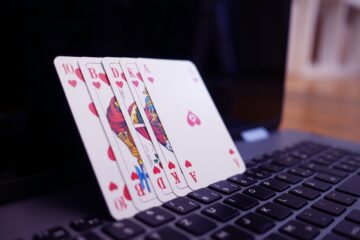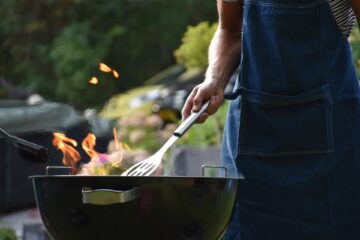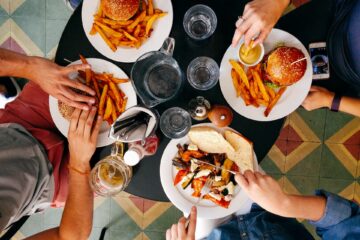Post-tooth extraction is usually a tough time for most. At this time, you want to eat a lot of things but your dentist already advised you to watch what you eat, and you’re in a fix.
As a pasta fan, after teeth removal, you may be tempted to consume a bowl of pasta.
Is pasta an ideal food for post-tooth extraction? Can you eat spaghetti after tooth extraction? How many days after tooth extraction can you have spaghetti? Are some questions that may raise concern for you, but don’t fret, we’re here for you!
Can I eat spaghetti after tooth extraction?
Yes, you can. Eating spaghetti after your tooth extraction is fine as long as it is cooked to be soft.
After tooth removal, it is ideal to avoid anything hard to chew.
Also, you may be tempted to enjoy your spaghetti with a tomato-based sauce. This is not a great idea. The acid contained in the tomato sauce is going to cause problems on the freshly extracted site.
When enjoying your bowl of spaghetti after tooth extraction, try not to chew too close to the extraction site as it needs time to fully heal.
Can I eat spaghetti three days after tooth extraction?
You definitely can. The extraction site has healed a bit more than the first day so it’s perfectly okay to do so. If you wanted to eat spaghetti the day after your teeth or tooth was extracted, it would still have been fine to do so. As long as the spaghetti in question is cooked until it’s soft, you can have it.
Because the exposed gum is still healing, you would need to chew far from it so you don’t apply pressure to it.
Factors to consider before eating spaghetti after tooth extraction
After a tooth extraction, it’s important to give the wound time to heal properly before attempting to eat solid foods, like spaghetti. The severity of the extraction will determine when it is safe to eat spaghetti again. Simple extractions, such as the removal of a single tooth, will typically require less recovery time than more complex extractions, such as wisdom teeth removal.
In general, it is recommended to wait at least 24-48 hours after the extraction before attempting to eat solid foods. During this time, it is important to stick to a soft food diet to avoid irritating the wound or getting food stuck in the extraction site. Your dentist may also provide specific instructions for your recovery, including dietary restrictions, that should be followed carefully to ensure proper healing.
It’s also important to consider any pain or discomfort you may be experiencing before attempting to eat solid foods like spaghetti. If you’re experiencing significant pain, it may be best to stick to soft foods until you feel more comfortable. Your dentist may recommend over-the-counter pain medication to help manage any discomfort.
Before attempting to eat spaghetti, it’s important to make sure you’re ready to do so safely. Start by testing the waters with other soft foods, such as mashed potatoes or scrambled eggs, to see how your mouth responds. If you’re able to eat these soft foods without any discomfort or irritation, it may be safe to move on to spaghetti.
Remember, everyone’s recovery process is different, and it’s important to listen to your body and follow your dentist’s instructions closely. Rushing the healing process can lead to complications, such as dry socket, which is a painful condition that can occur when the blood clot is dislodged from the socket. If you have any concerns or questions about when it is safe to eat spaghetti after a tooth extraction, don’t hesitate to contact your dentist for guidance.
Risks of eating spaghetti after tooth extraction
While spaghetti may be a favorite food for many, it can pose risks when eaten after a tooth extraction. There is a potential for getting food stuck in the extraction site or causing irritation to the wound, which can delay the healing process and lead to infection. Here are some of the specific risks associated with eating spaghetti after a tooth extraction:
- Getting food stuck in the extraction site: When you eat spaghetti, the long, thin noodles can easily become stuck in the extraction site. This can cause discomfort and irritation to the wound, and it can be difficult to remove the spaghetti without further aggravating the area.
- Irritating the wound: Spaghetti sauce contains acidic ingredients that can irritate the wound and delay the healing process. The acidity of the sauce can also cause a burning sensation in the mouth, which can be uncomfortable for those with a sensitive extraction site.
- Dry socket: One of the most significant risks associated with eating spaghetti after a tooth extraction is the potential for developing dry socket. Dry socket occurs when the blood clot that forms in the extraction site becomes dislodged or dissolves, exposing the underlying bone and nerves. This can cause severe pain, bad breath, and difficulty opening the mouth.
To avoid these risks, it’s important to wait until the extraction site has healed sufficiently before attempting to eat spaghetti. This typically takes several days or even a week, depending on the severity of the extraction. In the meantime, stick to soft foods that are easy to eat and won’t get stuck in the extraction site. If you do decide to eat spaghetti, be sure to cut it into small pieces and avoid sauce or other acidic ingredients that can irritate the wound. If you experience any discomfort or pain while eating spaghetti, stop immediately and consult your dentist.
Can I eat mac and cheese after tooth extraction?
Yes, you can. Mac and cheese is a wonderful post-tooth extraction comfort meal. This cheesy pasta meal is a great option while your gum is healing. Once you begin to chew easily again, it gets even better. If you had your tooth or teeth extracted or you’re about to, mac and cheese is a great post-surgery food. 10/10 would recommend.
We know how exhausting planning a post-tooth extraction diet can get. From personal experience, it’s a hassle. Taking out your tooth or teeth is a big step and we want to make this process smooth sailing for you.
Here’s a quick look at your ultimate post tooth extraction food list.
What should I eat for breakfast after tooth extraction?
- smoothies
- mashed potatoes
- scrambled eggs
- Greek yogurt
- soup
- instant oatmeal
- soft fruits
- French toast
What should I eat for lunch and dinner after tooth extraction?
- Spaghetti and ground beef
- mac and cheese
- tender chicken
- roasted vegetables
- pudding
- soft ramen or noodles
When the extraction site is healing, you want to stay clear of hard-to-chew foods as the pressure to bite into them and grind them can cause bleeding of the exposed gum.
Read also: Can I Eat Pringles With Braces?
Alternative foods to eat after tooth extraction
After a tooth extraction, it’s important to stick to a soft food diet to avoid irritating the wound and promoting proper healing. Here are some alternative foods to eat after tooth extraction that will provide adequate nutrition while being gentle on the mouth:
- Smoothies and milkshakes: Smoothies and milkshakes are excellent options for those who need to stick to a soft food diet. They can be made with a variety of ingredients, including fruits, vegetables, yogurt, and protein powder, to provide essential vitamins and nutrients.
- Mashed potatoes: Mashed potatoes are easy to swallow and can be made with a variety of flavors and toppings. They are a great source of carbohydrates, which are important for energy and maintaining a healthy diet.
- Applesauce: Applesauce is easy to eat and is a good source of fiber and vitamin C. It’s important to choose unsweetened applesauce to avoid added sugars that can irritate the wound.
- Yogurt: Yogurt is a great source of protein and calcium, which are essential for maintaining healthy bones and teeth. It’s important to choose plain yogurt without added sugars or fruit pieces that can irritate the wound.
- Soup: Soup is a great way to get nutrients while sticking to a soft food diet. Choose broths or pureed soups that are easy to swallow and won’t irritate the extraction site.
It’s also important to stay hydrated after a tooth extraction. Drink plenty of water and avoid carbonated beverages, which can be irritating to the mouth. If you’re looking for a little flavor, try adding a slice of lemon or cucumber to your water.
Remember, it’s important to follow your dentist’s instructions closely to ensure proper healing after a tooth extraction. If you have any concerns or questions about what foods to eat after a tooth extraction, don’t hesitate to contact your dentist for guidance.
Preparing spaghetti for consumption after tooth extraction
If you’re considering eating spaghetti after a tooth extraction, it’s important to prepare it in a way that is safe and easy to eat. Here are some tips for preparing spaghetti for consumption after tooth extraction:
- Cook the spaghetti until it’s very soft: To avoid getting spaghetti stuck in the extraction site, it’s important to cook the noodles until they are very soft. You can test the noodles by pressing them against the roof of your mouth with your tongue. If they’re too firm, continue cooking until they’re very soft.
- Cut the spaghetti into small pieces: Once the spaghetti is cooked, cut it into small pieces to make it easier to eat. This will also help prevent the noodles from getting stuck in the extraction site.
- Avoid sauce: Spaghetti sauce can be acidic and irritating to the wound, so it’s best to avoid it if possible. Instead, try adding a little bit of olive oil or butter to the spaghetti to add flavor and make it easier to swallow.
- Add cheese: Cheese is a good source of calcium and can help make spaghetti easier to eat. Try adding grated parmesan or mozzarella to your spaghetti to make it softer and more palatable.
- Use a fork and spoon: When eating spaghetti after a tooth extraction, it’s important to use a fork and spoon to avoid putting pressure on the extraction site. Use the spoon to scoop up small amounts of spaghetti and bring it to your mouth, then use the fork to help guide it in.
Remember, everyone’s recovery process is different, and it’s important to listen to your body and follow your dentist’s instructions closely. If you experience any discomfort or pain while eating spaghetti, stop immediately and consult your dentist.
Can I eat spaghetti Bolognese after tooth extraction?
No, it is not recommended to do so. As exciting as it may be to know that you can still enjoy a plate of spaghetti after tooth extraction, it will also interest you to know that spaghetti bolognese is out of the question.
Spaghetti bolognese is an Italian dish that serves spaghetti with bolognese sauce, and guess what the sauce is made primarily of? Tomatoes!
Tomatoes are bad for you if you had your teeth or tooth pulled out because the tomatoes contain acid that can cause irritation problems for your healing gum.
Read also: Can You Eat Steak with Braces?
How long after tooth extraction can I eat spaghetti?
A day after is fine. You can partake in some tasty but not spicy spaghetti a day after you extract your teeth or tooth. All you just need is a soft, and not a spicy bowl of spaghetti and you’re good to go!
Post-tooth surgery, your exposed gum is still very sensitive and needs time to heal properly. What this means is that the consistency of foods available for you is dependent on the stage of your healing process. In the first few days to a week, you can enjoy liquid/semi-liquid or soft foods like ground meat, soup.
This would soon change because as the weeks go by, you begin to eat harder meals like vegetables and hard fruits.
One day you wake up and your gums are fully healed and you can help yourself to a plate of spaghetti and tomato sauce without having to worry about anything.




